.webp)
10 Modern Office Design Ideas and Trends
Table of Contents
Modern office design has evolved far beyond cubicles and fluorescent lights. Today’s workplaces prioritize comfort, flexibility, and creativity to boost employee well-being and performance. A well-designed environment can inspire innovation, improve focus, and make daily tasks more enjoyable. From ergonomic furniture to natural lighting and flexible layouts, modern office design creates spaces where people feel energized and engaged. Whether you’re redesigning a corporate headquarters or refreshing a small workspace, these design concepts will help you build a productive, inspiring, and human-centered office environment.
Modern Office Design Concepts for Productivity and Innovation
1. Ergonomic Workplace
An ergonomic workplace is designed to prioritize employee health and comfort, reducing fatigue and frustration while boosting productivity. Poor office setups, such as using low-quality furniture, can lead to long-term issues like backaches, neck pain, and repetitive stress injuries. Ergonomic design concepts address these challenges by creating a workspace that aligns with the physical needs of employees.
Modern ergonomic office designs go beyond just chairs and desks, incorporating a holistic approach to employee well-being. This includes height ergonomic monitors placed at eye level to reduce neck strain, adjustable keyboards to prevent wrist discomfort, and anti-fatigue mats for those who stand for extended periods. Additionally, well-planned lighting and noise-reducing elements contribute to a healthier and more focused work environment.
While ergonomic chairs and standing desks are central to this concept, the integration of advanced technologies enhances their functionality. Ergonomic chairs with adjustable lumbar support, adjustable seat height, and armrests are designed to promote proper posture and comfort throughout the day. Pairing these chairs with height-adjustable desks allows employees to alternate between sitting and standing, improving circulation and reducing sedentary habits.
Accessories like standing desk risers, office footrests, and standing stools further complement this setup, allowing for greater flexibility and comfort. By creating an ergonomic workplace, employers can ensure that employees feel supported, both physically and mentally, fostering a more productive and engaged workforce.
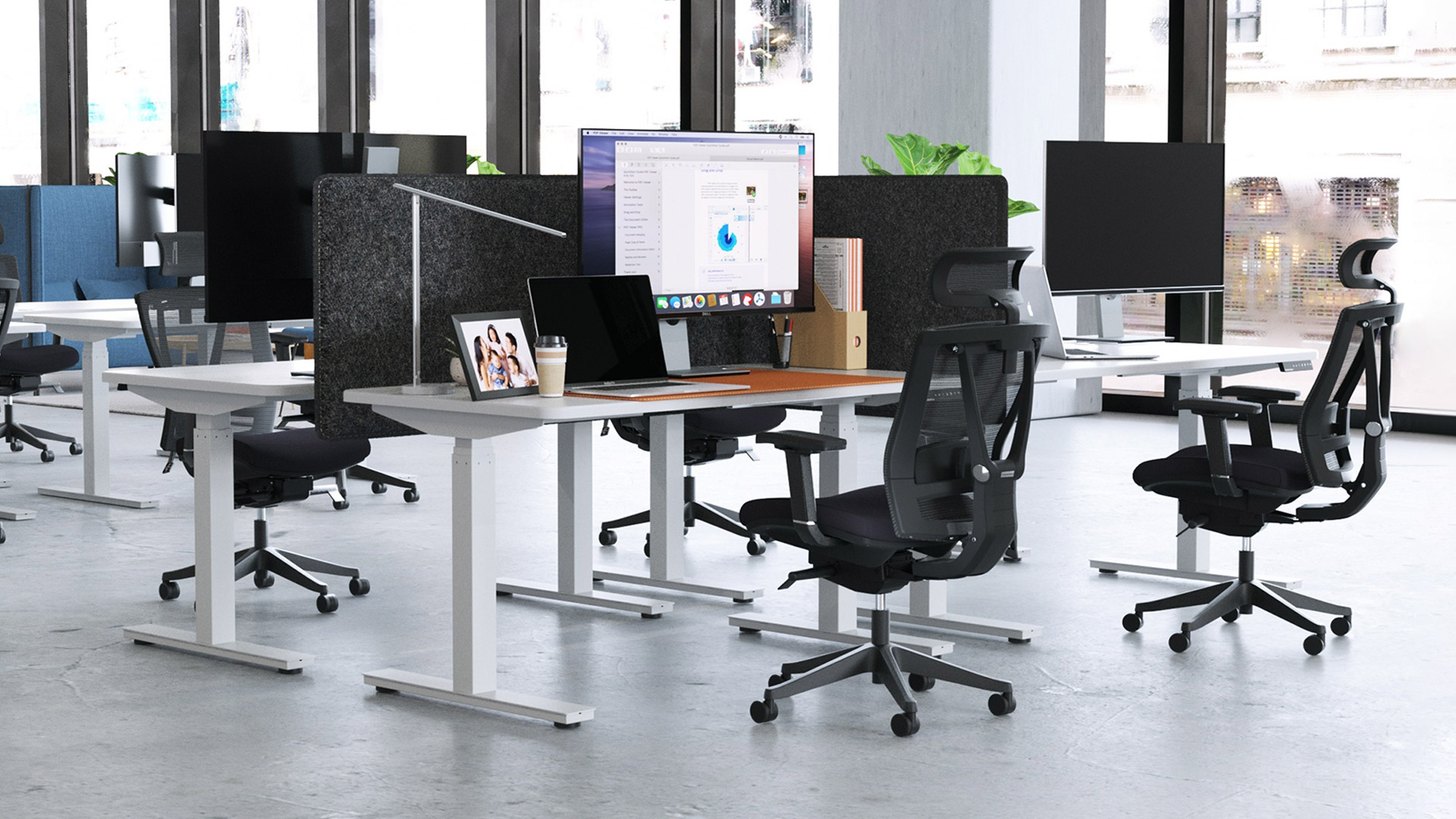
2. Nature-based Office
Also called biophilic office design, which stems from the love of nature, this modern office design concept focuses on increasing the link between the natural environment and the workplace’s occupants through direct or indirect nature and other conditions. Incorporating nature elements in the office has many benefits, both to the employee’s health and the immediate environment.
The nature-based office interior design concept positively affects the worker’s mental health, wellbeing, and performance by incorporating the following nature elements:
- Light: Having natural light in the workplace is fundamental to the workers because it enables day, night, and season orientation while in the office.
- Plants: Vegetation, especially flowering plants, is one of the most effective ways to bring nature into your workplace. Plants are known to reduce stress, enhance comfort, and boost productivity. They create a calming atmosphere, improving both mental well-being and air quality. For offices with limited natural light, explore plants for offices with no windows to maintain greenery in challenging conditions. To add a touch of positivity, consider a plant that attracts money. If you’re looking to decorate individual workstations, indoor plants for office desks are perfect for adding life to your space.
- Water: The most alluring part of the water is that it’s a multi-sensory experience. You can see, hear, and touch it, but most of its benefits come from the sound of flowing water. It promotes satisfaction and improves your health and performance.
- Air: Having natural ventilation can increase people’s comfort and productivity. The easy way to incorporate an airflow is through windows or other more complex strategies.
Incorporating elements like fire through a modern fireplace or hearth adds warmth and a sense of comfort. While less common, having an office pet can increase pleasure, mental stimulation, and team bonding.
Bringing natural elements into the office creates a holistic environment where employees can feel energized and inspired.
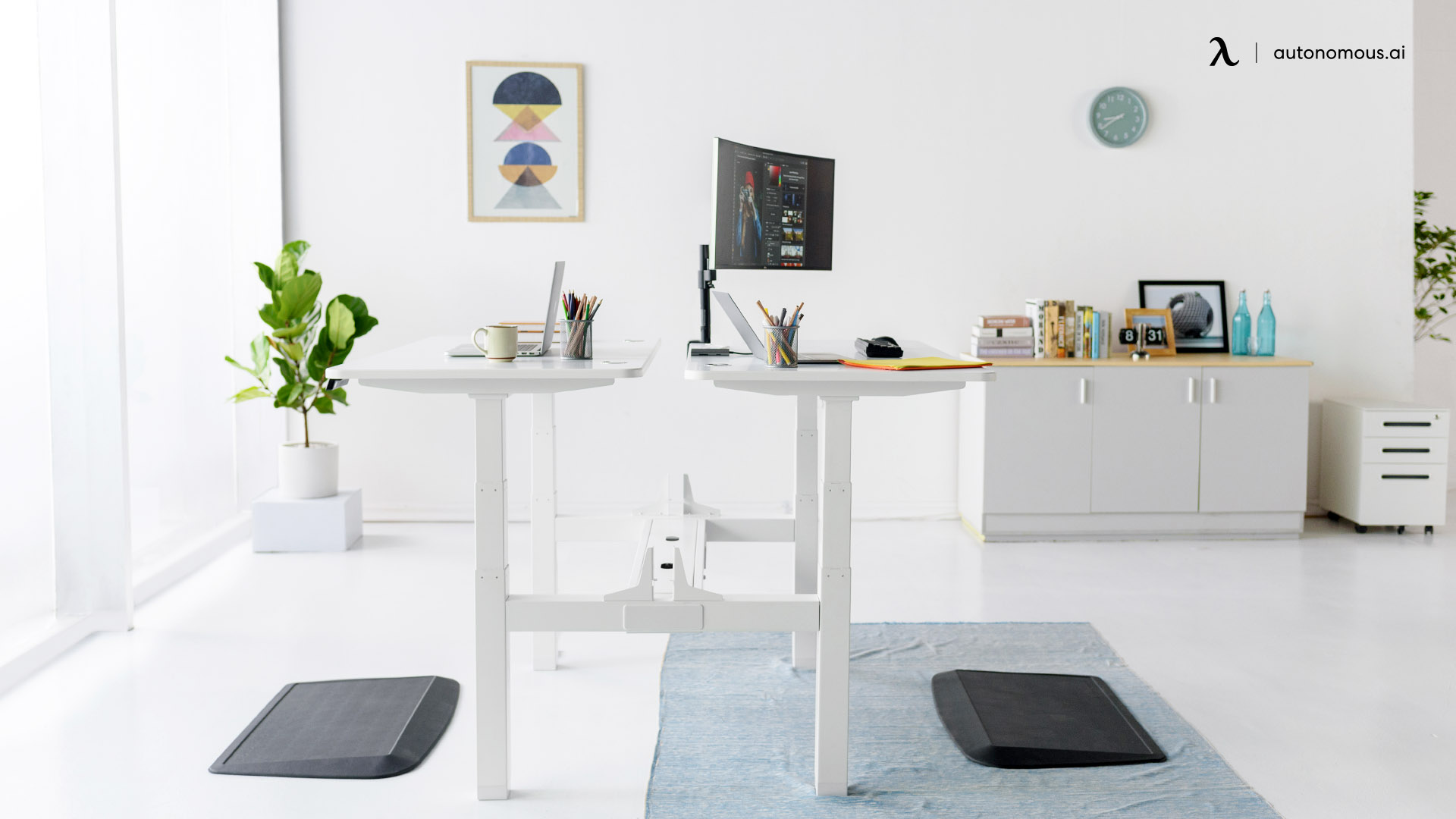
3. Activity-based Working
This modern office design concept looks to increase the worker’s productivity through interaction and communication. It also looks to retain the employee’s satisfaction and reduce the overall accommodation costs. The activity-based working concept is meant to improve the workplace’s overall efficiency and satisfaction by allowing employees who perform multiple tasks to move to any place in the office that best suits their job at hand.
Workplaces that implement this modern office setup idea can expect to have a considerably more flexible workspace that allows workers to get the best results even while having diverse work styles. The freedom given to the employees makes it easier for them to perform their jobs adequately. There are a couple of spatial areas that are common in this kind of design, to mention some:
- Small booths: They are usually enclosed and isolated areas that allow for privacy. It’s ideal for people who need a quiet place to concentrate on their work or call a client.
- Café atmospheres: These casual areas allow people to enjoy their lunch or snacks while providing them with many seating options such as long tables, couches, coffee tables, and semicircle booths. You can discuss work-related matters with your coworkers or have a brief chat with them.
- Conference rooms: It has a formal enclosed setting where multiple people can meet to brainstorm ideas or discuss strategies. There’s also the option of using a more informal room when the job is more casual.
Other activity-based working environments include lounge areas, outdoor terraces, open office areas, among others.
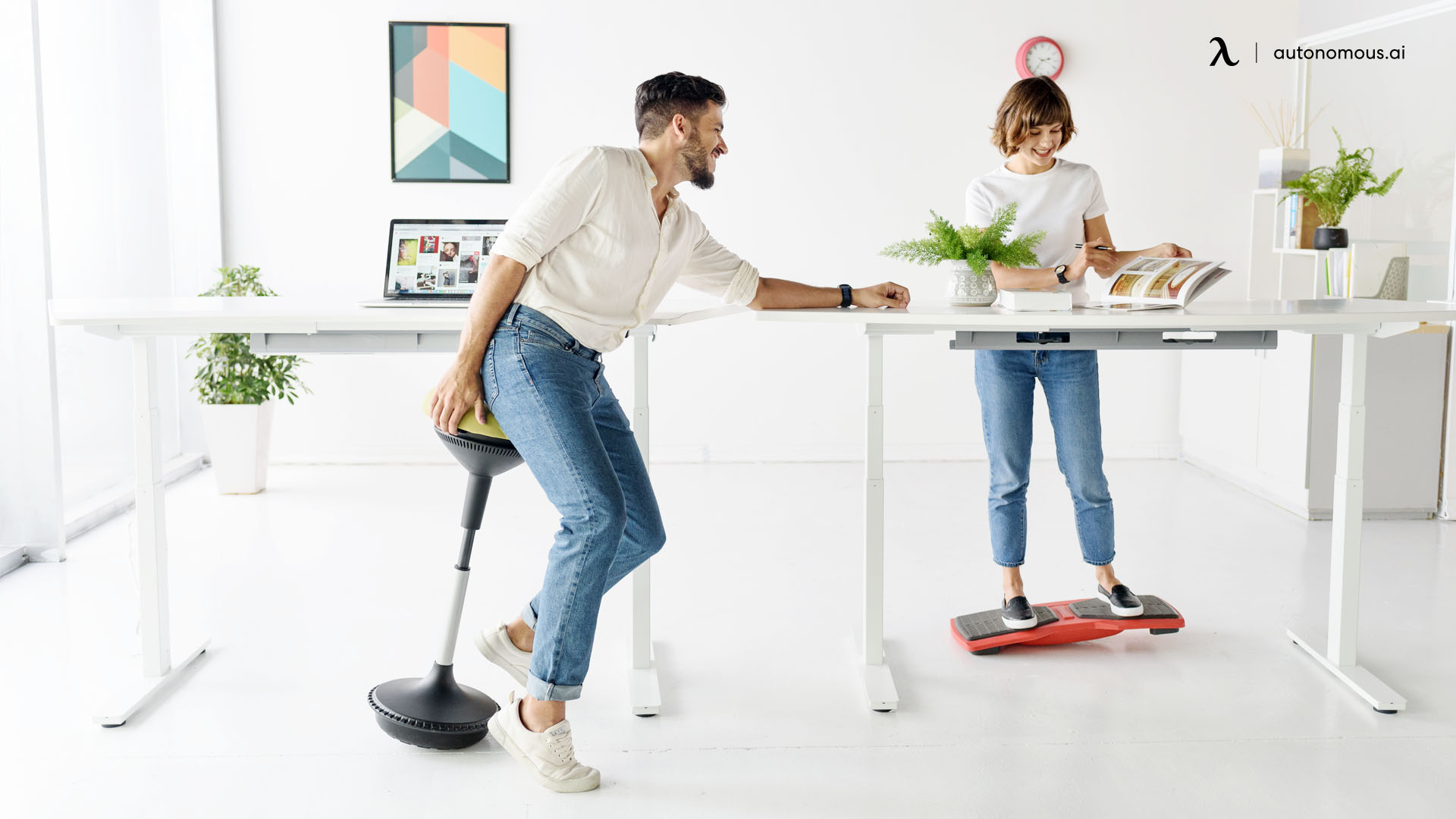
4. Glass Doors and Walls
Glass doors and walls have become a hallmark of modern office design due to their versatility and aesthetic appeal. While not exclusive to any one concept, they are a staple in various office interior design trends and are valued for their functionality and ability to enhance the workspace.
One of the key benefits of glass office walls is their ability to create a sense of openness and transparency. These walls promote a collaborative environment by reducing isolation and fostering visibility. Employees are more aware of their surroundings, which can encourage accountability, integrity, and teamwork. Additionally, glass designs establish clear order and structure while maintaining a modern and sleek aesthetic. For creative ways to incorporate glass into workspaces, explore glass-enclosed home office ideas.
Glass doors and walls also maximize natural light, which is more beneficial than artificial lighting. The increased daylight improves employees’ orientation throughout the day, boosts mood, and enhances productivity. For conference rooms, elegant glass designs can add sophistication and functionality.
For personalized touches, custom-made glass walls can feature your company’s logo or unique designs, blending branding with functionality. Interior glass walls are also highly flexible—they can be movable, allowing for quick reconfigurations of office layouts. This adaptability makes them a popular choice in dynamic workspaces. To learn more about their benefits, check out interior glass office ideas.
Incorporating glass doors and walls into your office design not only elevates the aesthetic appeal but also enhances functionality, making it a timeless addition to modern workspaces.
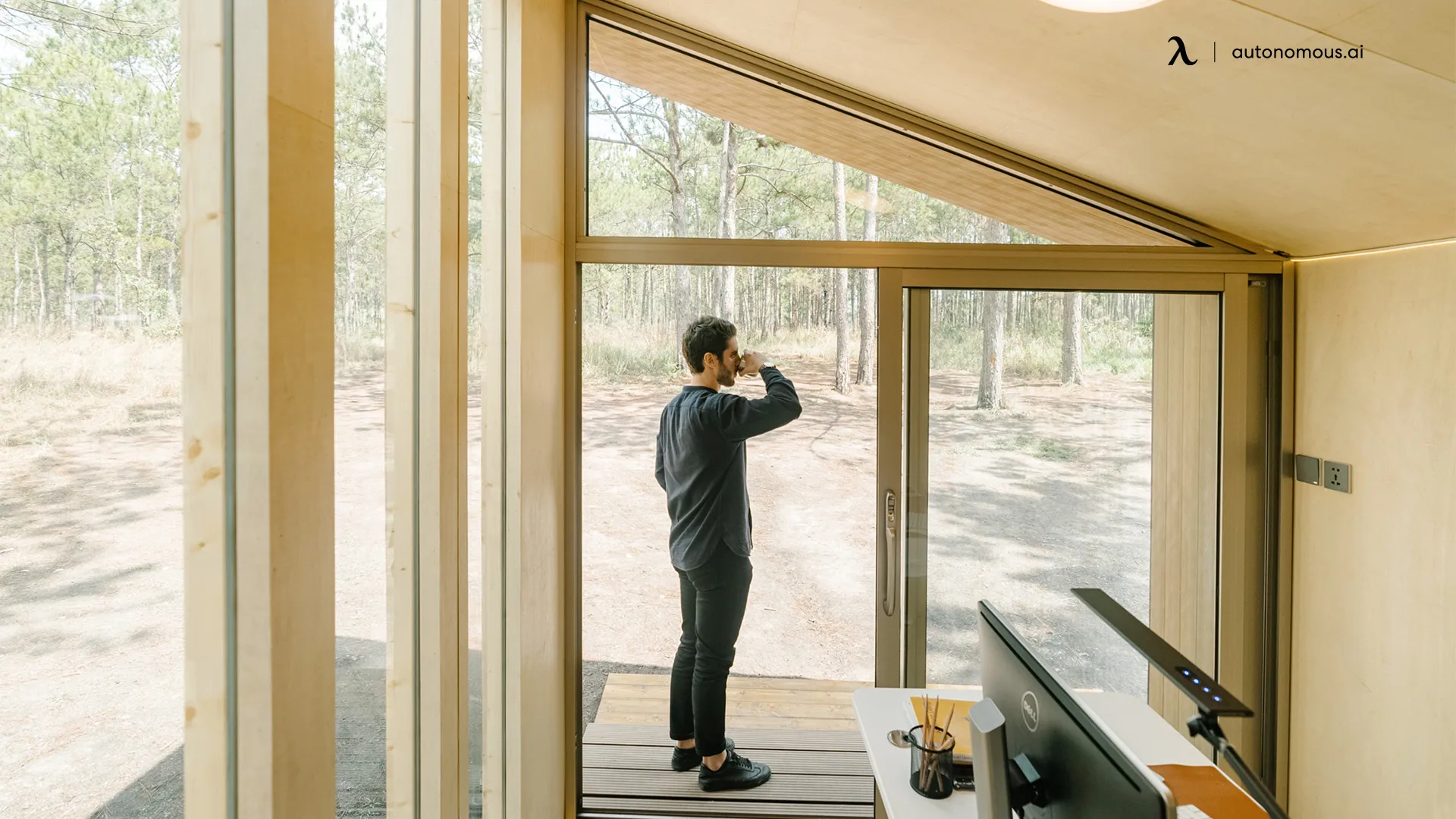
5. Home-like Atmosphere
Currently, almost every office job can be done just with a computer or a laptop. As working from a distance becomes more common and practical, employees stop needing to go to their office to work, even when it’s mostly true that people’s productivity increases at their workplace. Although this is the case, many companies still require physical attendance. Because of this, most companies are making the shift to the trend of giving your workplace design a homey atmosphere, allowing workers to feel at home while on the clock.
The idea behind the home-like office interior design concept is to make the workplace experience a relaxing and stress-free one. Just having couches and lounges in some places in the office allows people to take breaks comfortably. It lets them whittle away their fatigue and focus once more on their day.
These pieces of furniture can also have a productive use. Employees can work on their laptops while sitting on a comfortable couch or a long table. Some group meetings take an informal tone as they’re held in places that resemble living rooms. The home-like design favors open-floor layouts with encouraging and enjoyable surroundings. Many offices with this design incorporate modern aesthetics and entertaining aspects such as swings, slides, and even ping-pong tables.
Many home-like office interior design concepts include lounge areas, cafés, break rooms with recreational activities, cozy types of furniture, terraces, and many other things.
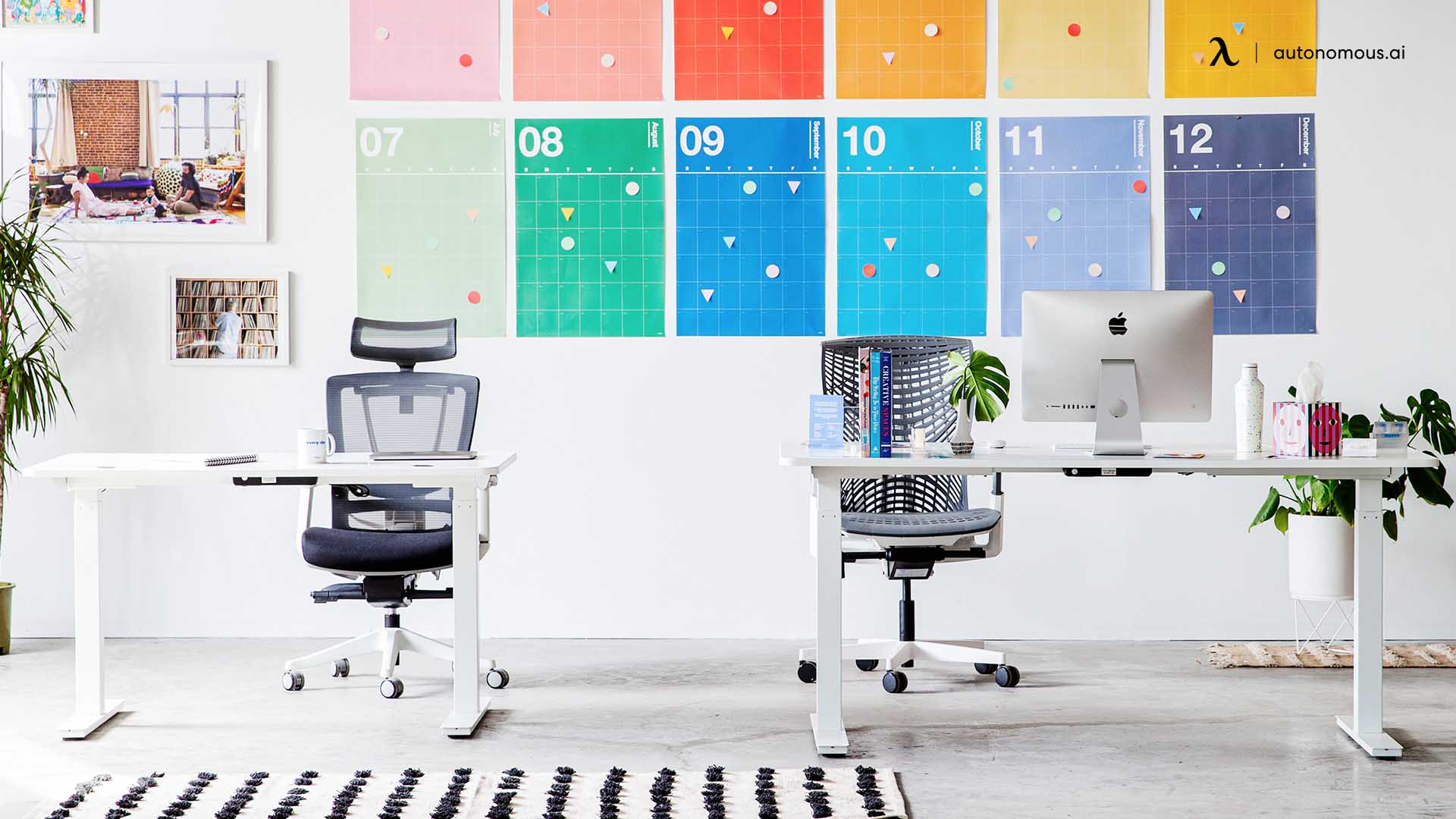
6. Flexible Workspace
Flexible workspace designs feature an easily customizable office layout that can adapt quickly to the office’s needs by making use of desks, chairs, and tables that can be moved and rearranged. This design directly contrasts with the traditional office layout, where the furniture setting and other things tend to be completely rigid and fixed in place.
When you need to have a meeting with multiple people, you can easily rearrange a couple of tables and chairs to fit any number of participants. Usually, the furniture used in these workplaces must have caster wheels to provide easy movement around the office. It allows for the quick formation and collaboration of multiple teams for any task, whether its duration is short or long.
In a way, flexible workspaces highly resemble the activity-based modern office design concept, except the office doesn’t have the various facilities that adapt to every people’s work style and peculiarities. A similarity is that both can have unassigned seating arrangements, meaning that there isn’t an assigned workspace for any employee. Workers sit and work where they need to or where they feel they can be more productive.
Not having a specific desk or workstation can enhance the employee’s interrelations as they encourage collaboration during projects. It also results in higher satisfaction for the workers.
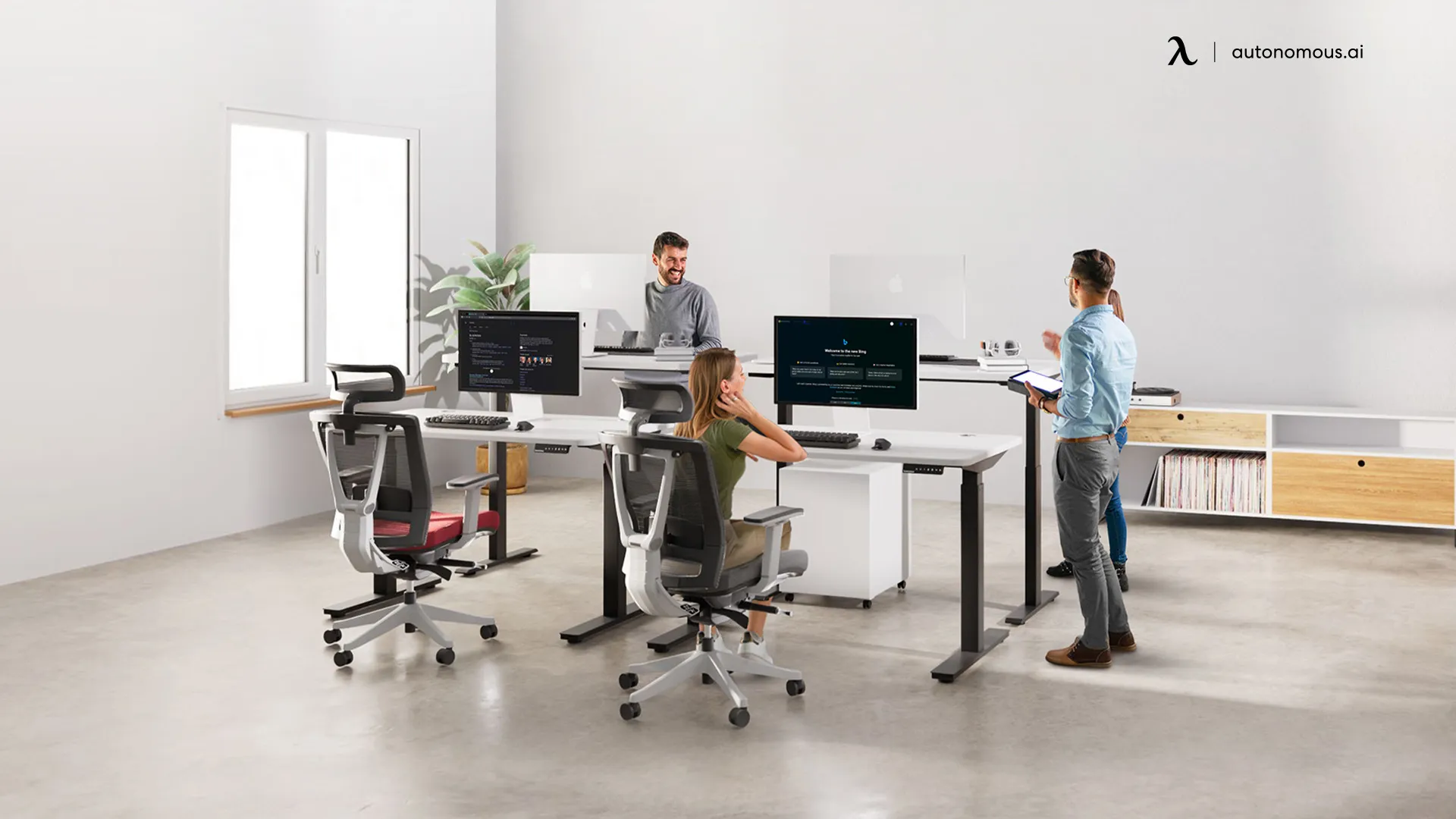
7. Industrial Office
The industrial office interior design concept draws inspiration from old factories, warehouses, barns, and other industrial spaces transformed into modern lofts, offices, or living areas. This style is characterized by its raw, unfinished aesthetic, featuring components like weathered wood, exposed brick, concrete floors, and industrial lighting fixtures. It combines functionality with a unique sense of character, creating a space that feels unconventional yet welcoming.
The simplest way to achieve an industrial office look is to repurpose an old factory or warehouse. These buildings often come with many hallmark features of industrial design, such as high ceilings, open floor plans, large windows, concrete floors, and exposed brick walls. Visible pipes, beams, and ducts are another iconic element that adds to the rugged charm of this style.
Industrial office designs often embrace a natural color palette with shades of gray, rustic tones, and warm hues. These colors create a sense of openness and spaciousness, making even smaller spaces feel more expansive. For offices without abundant natural light, floor lamps or metallic light fixtures blend seamlessly into the industrial aesthetic while enhancing functionality.
Whether designing a rustic-themed workspace or a compact office, there are numerous ways to adopt this style. Explore ideas for a rustic industrial office design to make the most of your space.
Industrial office design strikes the perfect balance between modern functionality and vintage appeal, creating a workspace that is both stylish and highly practical.
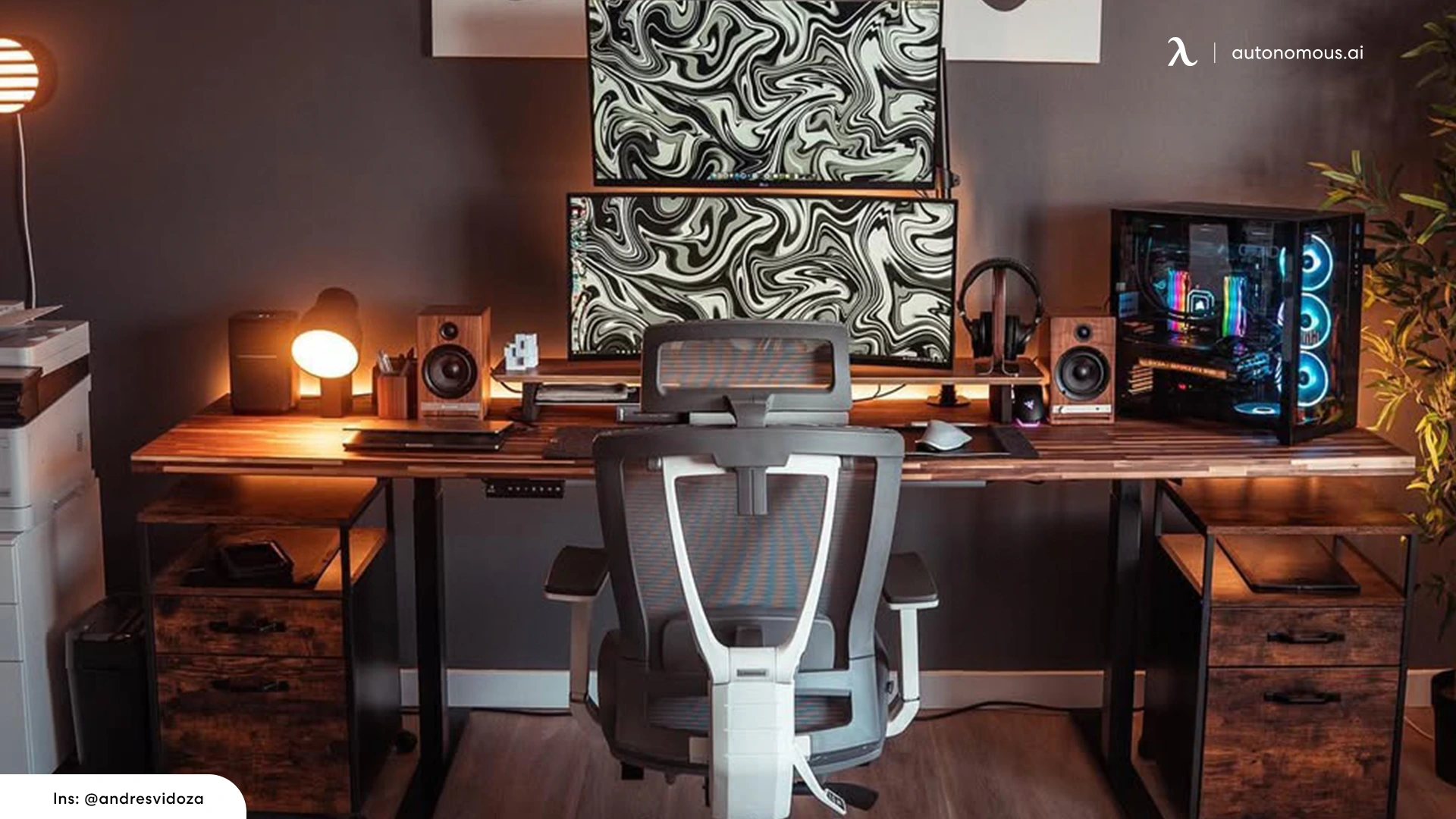
8. Modular Office Spaces
Modular office spaces are an innovative solution for workplaces that need to adapt to dynamic business needs. By using movable walls, foldable furniture, and multi-purpose layouts, modular designs allow companies to reconfigure their spaces with minimal effort and cost. This flexibility ensures that the office can evolve alongside the organization, accommodating growth, changes in team sizes, or shifts in work styles.
A key advantage of modular spaces is their ability to support diverse activities within a single area. For instance, a meeting room can quickly transform into a collaborative brainstorming hub or a quiet zone for focused work by rearranging modular furniture. This adaptability optimizes space utilization, making every square foot functional and valuable.
Modular designs are also a sustainable choice. Instead of undergoing costly renovations, businesses can make adjustments using existing components, reducing waste and environmental impact. Additionally, modular systems are often designed with durability and longevity in mind, further enhancing their eco-friendly appeal.
This concept is particularly valuable in hybrid work environments, where the number of in-office employees can fluctuate. Modular office spaces create an agile workspace that meets immediate needs while remaining future-proof. This approach not only improves efficiency but also fosters a sense of innovation and creativity among employees.
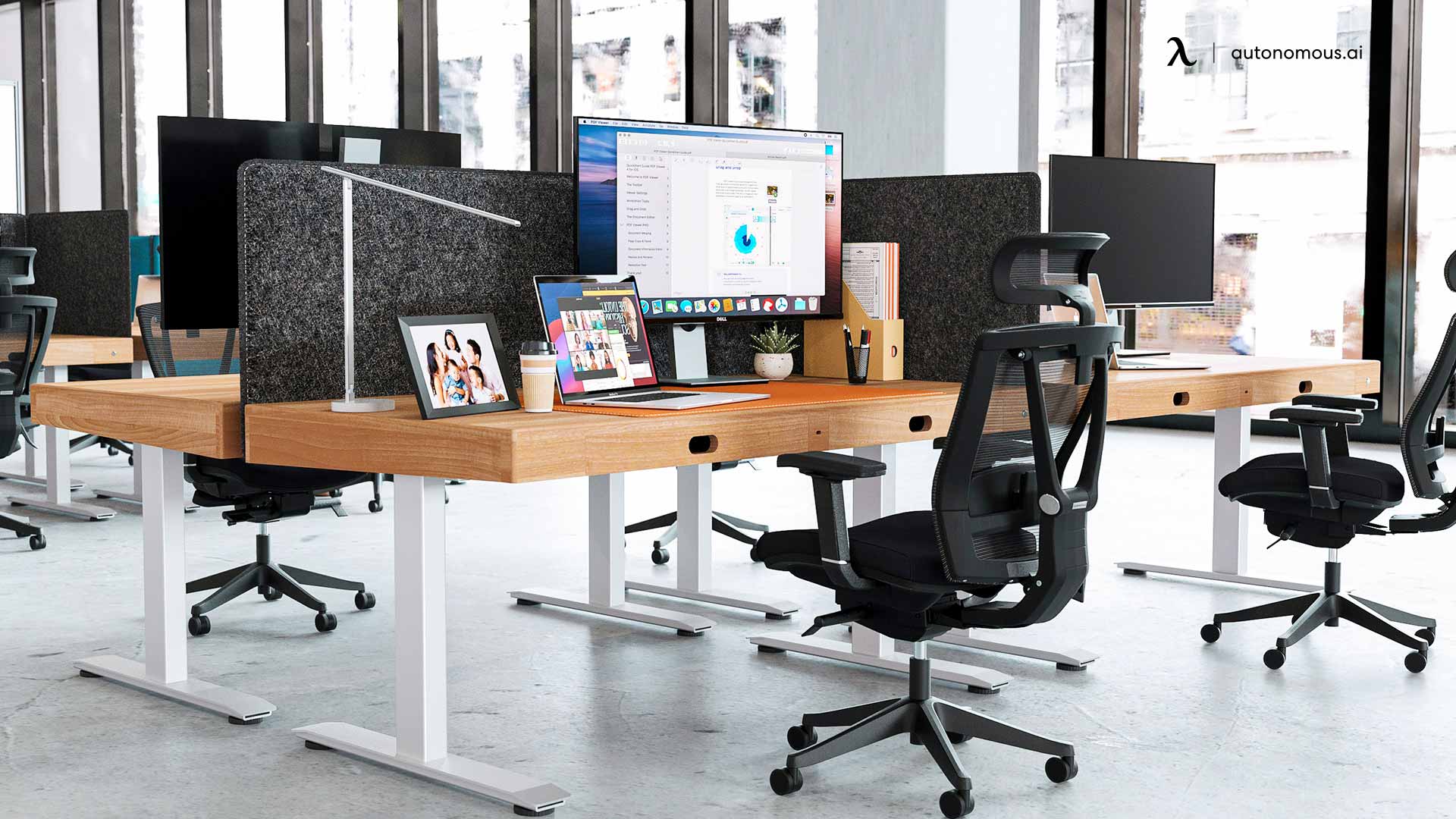
9. More Outdoor Spaces
Many companies and modern office spaces are lucky enough to have a private terrace, courtyard, or rooftop garden in their modern office ideas. In some cases, there will be a shift to outdoor spaces becoming a "must-have" in some cases. Prospective employees will find that an attractive outdoor area will differentiate your organization from the competition. Biophilia, a concept known for its benefits for health and well-being, will be at the center of many modern home office ideas.
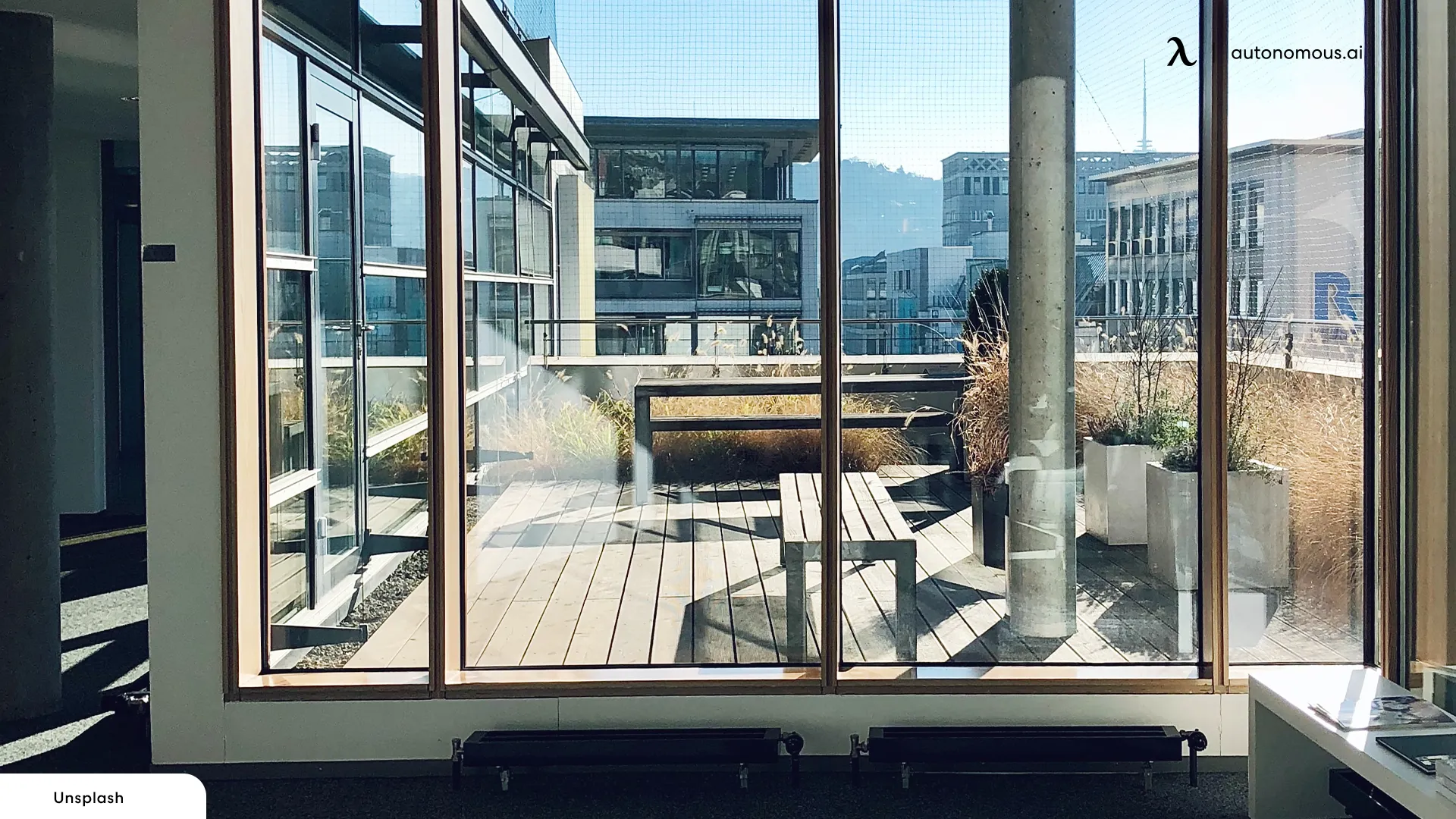
10. Relying More on Natural Light
The natural light in a workspace can make employees more relaxed and positive and give visitors the impression your workspace is larger than it is. A recent survey shows that 47% of employees feel tired or gloomy due to a lack of natural light and windows in the workplace.
Partitions or architectural accents are used instead of interior walls – or smart glass panels that adjust from transparent to opaque using an app or button. Mirrored surfaces maximize the impact of natural light. Pale colors, glossy finishes, and mirrors all let natural light through. Maintain a clean and minimalist look with your furniture and storage options to allow the light to reach every corner of your living space.
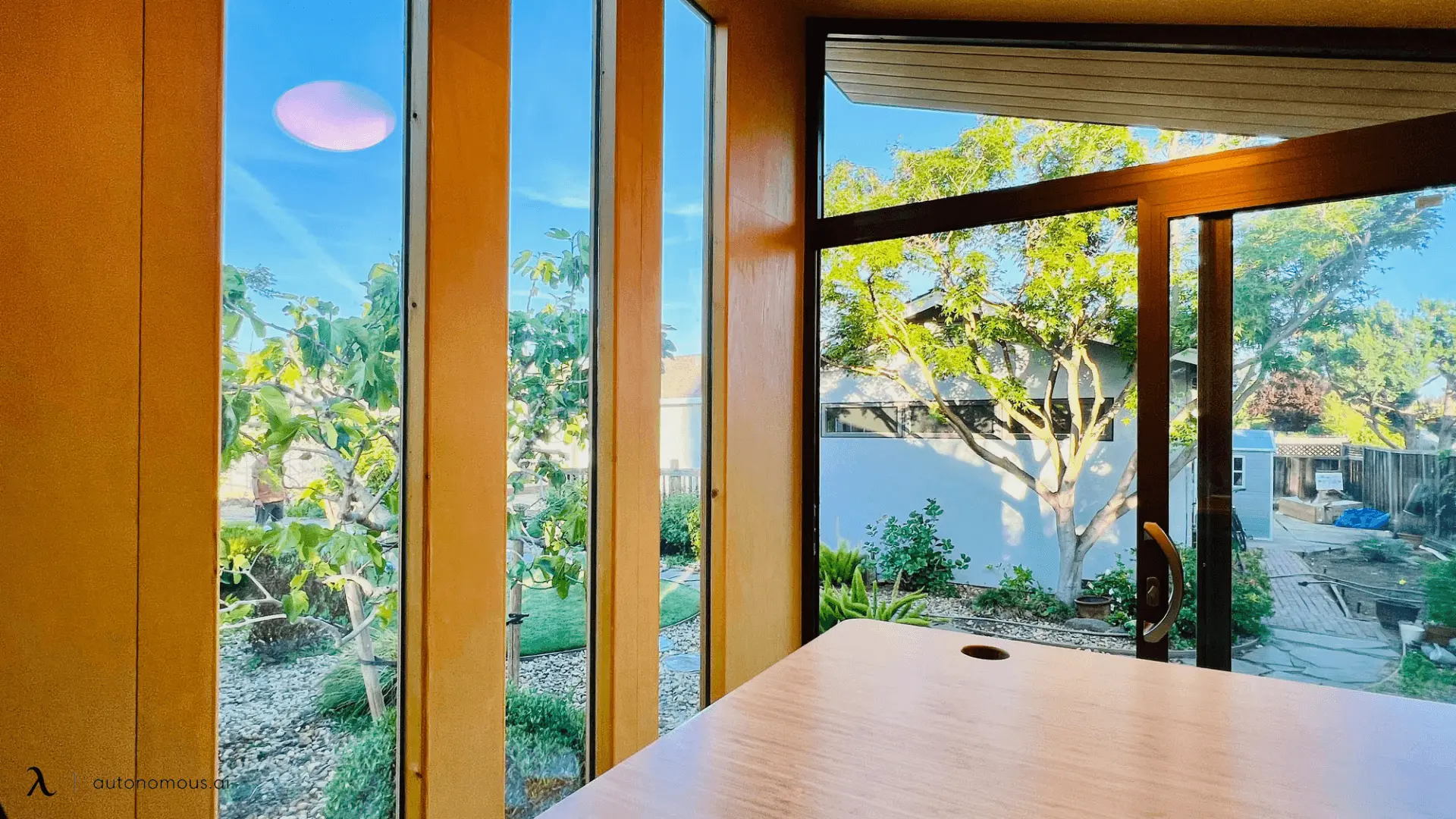
Which Modern Office Design Concept Is Right for You?
Choosing the right modern office design depends on your team’s work style, company culture, and space requirements. If your priority is employee well-being, ergonomic workstations and natural light can create a healthier, more focused environment. For collaboration and flexibility, modular layouts and activity-based spaces are ideal.
If you want to inspire creativity, consider nature-based elements, glass walls, or outdoor areas to bring in openness and energy. The best modern office design blends functionality with personality, ensuring your workspace supports both productivity and a positive employee experience.
Feng Shui Elements in Modern Office Layout
Feng shui emphasizes that different parts of your home symbolize various aspects of life, and your office or desk represents your career. By aligning your workspace with feng shui principles, you can create a more supportive environment for growth and success. Whether setting up a new office or refreshing an existing one, these feng shui tips can help you design an optimal modern office layout.
- Desk Placement
A dedicated feng shui office desk signifies stability in your career. Ideally, place the desk in a room exclusively for work. If that’s not possible, avoid setting it in a bedroom. A desk in the bedroom not only creates distractions during work hours but also makes it harder to relax at the end of the day. If a multifunctional space is unavoidable, use a room divider, bookcase, or curtain to separate work and personal zones.
Position your desk in a commanding spot where you can see the door without sitting directly in front of it. This layout provides a subconscious sense of control and readiness, contributing to a positive and empowered mindset. If your setup places the office desk against a wall, ensure there’s something visually stimulating in front of you, such as artwork or plants, to maintain inspiration.
- Commanding Position
Placing your desk in a commanding position is essential in feng shui. Ensure you can see the door while working, even if you’re not directly in front of it. This arrangement promotes a sense of control and confidence. You can also explore specific tips for a feng shui office layout with a window or an L-shaped desk office layout for feng shui.
- Flow and Accessibility
Ensure your workspace has a good flow. Your desk should be easy to access, with no obstacles blocking your movement to and from your chair. Barriers or cramped setups may symbolically represent challenges in your career. Rearrange or remove any obstructions to create a smoother and more harmonious energy flow.
- Enhancements and Decor
Enhance your workspace with decor elements that align with feng shui principles. Incorporate feng shui plants for office to bring life and vitality into your environment. Mirrors can also be a powerful addition; learn how to use a mirror in office feng shui to reflect energy and expand your space.
- Cubicles and Specific Layouts
Even if you work in a cubicle, you can still apply feng shui principles. For tips, explore feng shui office cubicle ideas to create a harmonious and balanced space. Feng shui elements enhance balance and harmony, making them a valuable addition to modern office layouts. To prepare for the future, explore office feng shui 2025 to keep your workspace aligned with evolving trends and energy principles.
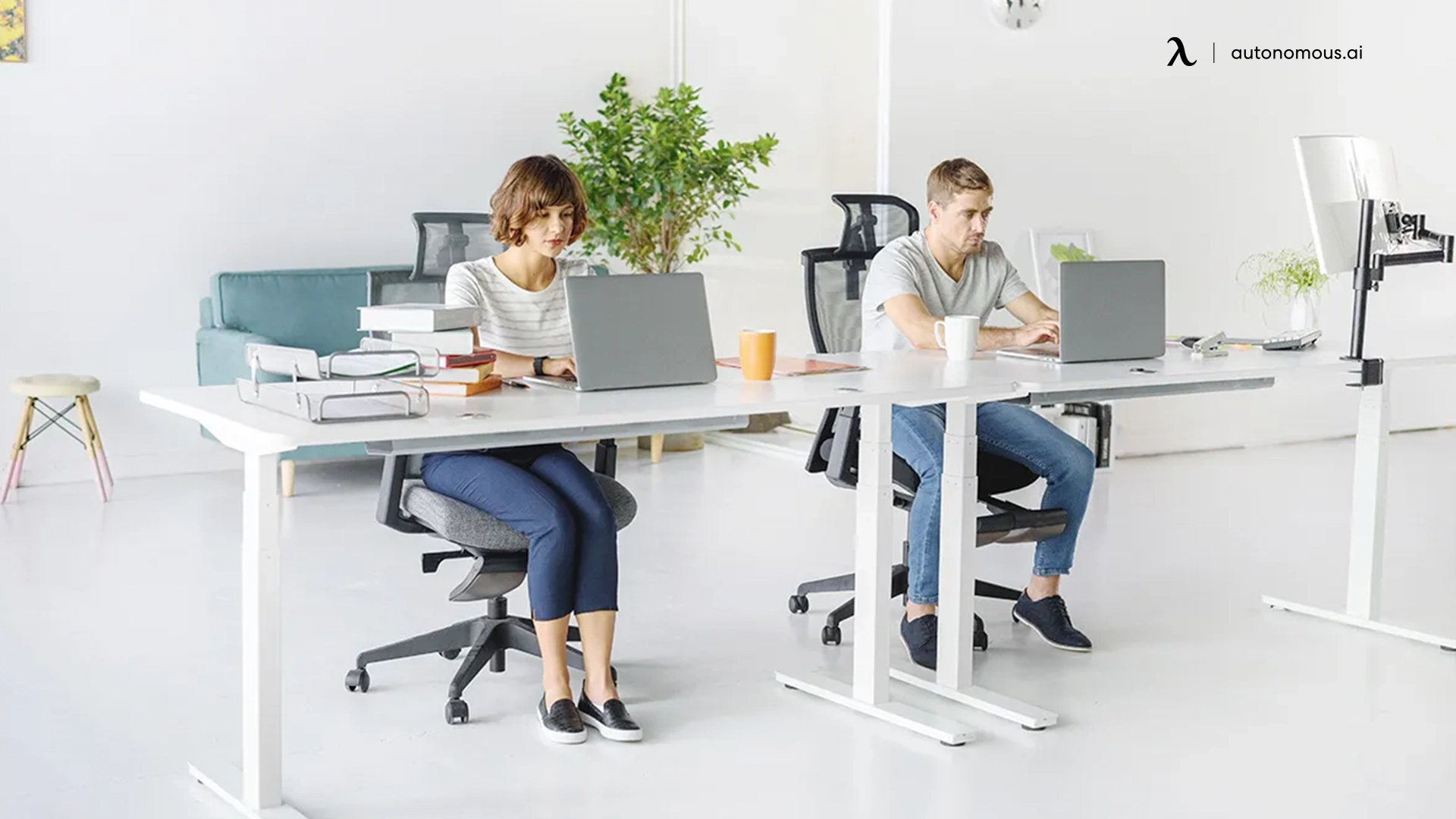
FAQs
What are some modern office design ideas for small spaces?
Focus on multifunctional furniture, light color palettes, and glass partitions to make the space feel open. Natural light and modular layouts can help small offices feel larger and more flexible.
How do I create a modern office setup for a hybrid team?
A modern office setup for hybrid work should include flexible seating, quiet zones, and collaborative areas. This balance allows both remote and in-office employees to work efficiently and stay connected.
What makes a modern office space design effective?
An effective modern office space design improves comfort, focus, and flow. It blends ergonomic furniture, thoughtful circulation, and natural elements to support different work styles.
How do I choose a modern office design layout that boosts productivity?
Pick a layout that encourages movement and minimizes distractions. Combining open work areas with dedicated quiet spaces gives employees the freedom to work where they’re most productive.
What are the top modern office design trends this year?
Key modern office design trends include flexible work zones, biophilic elements, warm lighting, and modular furniture. Companies are moving toward layouts that prioritize wellness, creativity, and collaboration.
Where can I find modern office design inspiration?
You can draw inspiration from design magazines, online galleries, or real company workspaces. Look for ideas that match your brand identity and can be adapted to your space.
How much does a modern office design cost?
The cost depends on the scale of the redesign, materials, and furniture choices. Many businesses start small with ergonomic upgrades and lighting improvements before investing in larger layout changes.
Can a modern office design layout help reduce noise and distractions?
Yes. Zoning the space, using acoustic panels, and integrating soft materials can reduce noise levels while keeping the layout open and modern.
Is it possible to retrofit an old office into a modern office space design?
Absolutely. Adding modular furniture, open areas, better lighting, and glass partitions can transform a dated office into a modern, functional workspace without a full rebuild.
How does a modern office design layout reflect company culture?
Your layout communicates your values. Open spaces reflect collaboration, lounge areas show care for well-being, and focused zones highlight a culture of deep work and productivity.
Conclusion
Modern office interior design merges functionality, comfort, and style to create a workspace that supports productivity and employee well-being. Thoughtful choices like ergonomic furniture, dynamic layouts, and nature-inspired elements enhance collaboration and make the office more inviting. Each design decision reflects a company’s commitment to fostering innovation and creating a space where employees and visitors feel valued.
Selecting the right concepts and equipment ensures the office meets both practical needs and aesthetic goals. A well-designed interior contributes to better workflow, boosts morale, and leaves a lasting impression. The right balance of form and function transforms any office into an inspiring environment where people can do their best work.
Whether you are redesigning or starting from scratch, modern office interior design provides the tools to shape a workspace that aligns with your brand and organizational goals. A great office isn’t just a place to work—it’s a space that drives success and creativity.
Spread the word
.svg)








